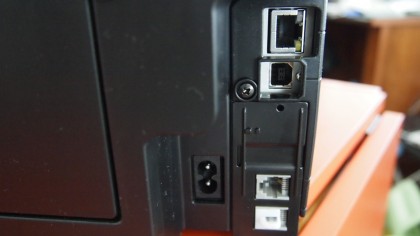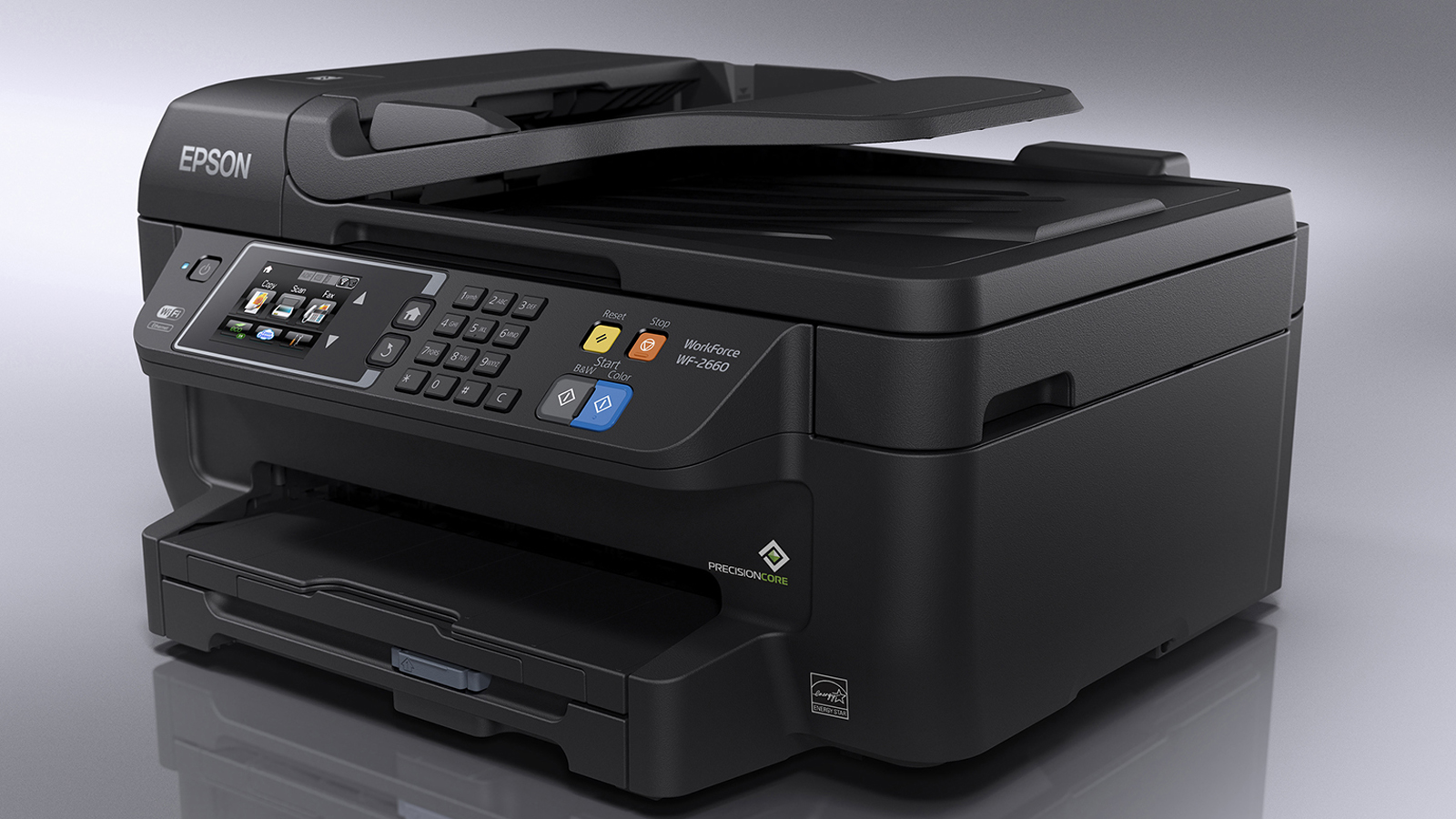Why you can trust TechRadar
With the maximum scan resolution being 1200x2400 dpi, I was disappointed that both the Epson Scan software and the Epson iPrint mobile app cap off the scan resolution to just 300dpi (it is a drop-down menu with set resolutions). Though this resolution will more than suffice for scanning documents, I would look to a higher resolution scanner to handle photos or artwork. Though it is also capable of copying documents through the ADF, its copy resolution is lower than that of the scanner, so I wouldn't copy works of art with the WF-2660.
Rather than include direct media slots so you can plug your USB drive or SD card directly to the printer, the WF-2660 has eschewed this feature for NFC (Near Field Communication), which is available on most Android devices (but not iPhones). In order to connect your NFC-enabled mobile device with the printer, you'll need to first download the Epson iPrint app, turn on NFC, then place your device onto the printer (where the "N" logo on top of the printer.) Touching the two devices together will trigger the iPrint app to open, but you still have to tell the printer what to do. If your mobile device is running Android 4.4 (KitKat) or later, you won't be able to see the "print" button in the app as that button is only accessible through the capacitive touch "menu" key. However, if you have a slightly older device running 4.3 (Jelly Bean) or earlier, then the app should work like a charm.

Two of my favorite features of the WF-2660 are Email Print and Scan to Cloud. Email Print lets you assign (then customize) an email address for the printer, while Scan to Cloud allows you to save your scanned files to cloud-based services like Dropbox or even to a specific email account. Whenever I had trouble connecting to the machine, I would just email files to the printer to print, or ask the printer to email scanned files directly to my inbox. These features made the printer much more enjoyable to use.
Setup
Depending on which computer you use to set up the WF-2660 for the first time, you could be in for a bumpy ride. First of all, you'll need to use an existing USB cable for the printer's initial setup, as Epson doesn't include one in the box. You actually can't install the ink cartridges until you power on the printer for the first time, and you need to insert the four tanks (cyan, magenta, yellow and black) in the correct order for the printer to work. I don't have a phone line at my home so I could not test out its fax functions, and my router was too far from the printer to plug an Ethernet cord, so I set the WF-2660 up as a wired-USB printer.
I made the mistake using my optical drive-less, Windows 7 Ultrabook for the initial setup, which was unnecessarily cumbersome. Epson didn't bundle all the relevant drivers into a single download, so I had to hunt down both the (local) printer and scanner drivers from its website, as well as manually set the device up as a wireless printer on my computer. If you have access to a PC with an optical drive, plug the WF-2660 into that machine and use the setup CD: it will install all the drivers and software you need within minutes.
Wireless Printing
To make the most of the WF-2660's wireless talents, you need to spend a bit of time going through the network settings on the device and the Epson Connect website. I recommend downloading the Epson Connect Printer driver for Remote Print (from Epson Connect), as it will give you access to Email Print and Scan to Cloud: two very reliable features that you can only set up through the website and after this driver is already on your system.
In addition to being a wireless printer, the WF-2660 can also create a direct network with whatever device you want to print from (Wi-Fi Direct). Unfortunately, this feature only worked with my Samsung Galaxy Note 4 (once) but not my laptop.
Since Epson supports the Android mobile printing standards, Mopria, you might not even have to download the Epson iPrint app if you're using an Android 4.4 (Kit Kat) or later device. You should be able to print directly from apps with a built-in print function. Other Android and iOS users will have to grab the iPrint app from their respective app stores.
Current page: Scanning, copying and cloud printing
Prev Page Introduction and design Next Page Print speed and verdict